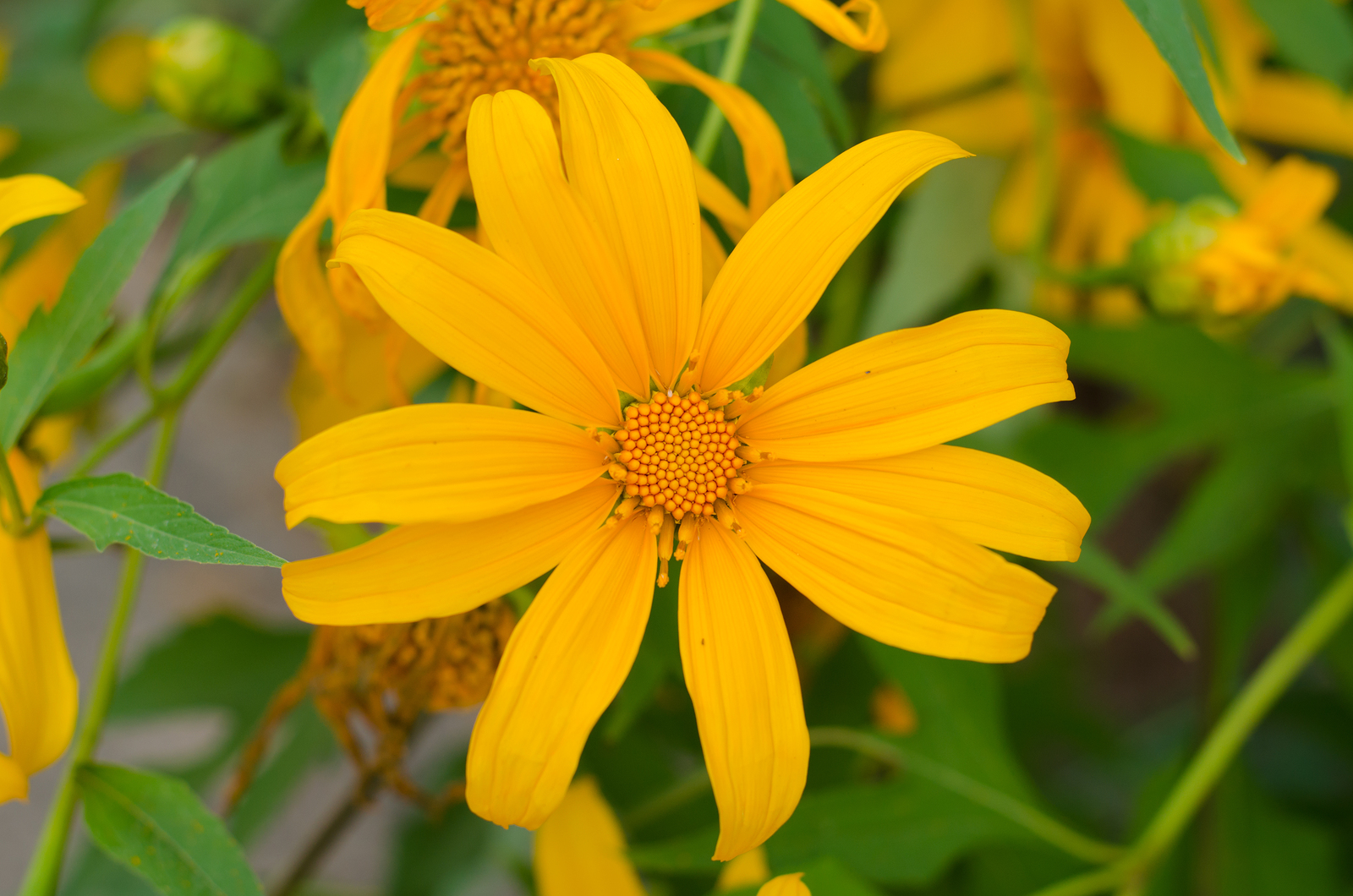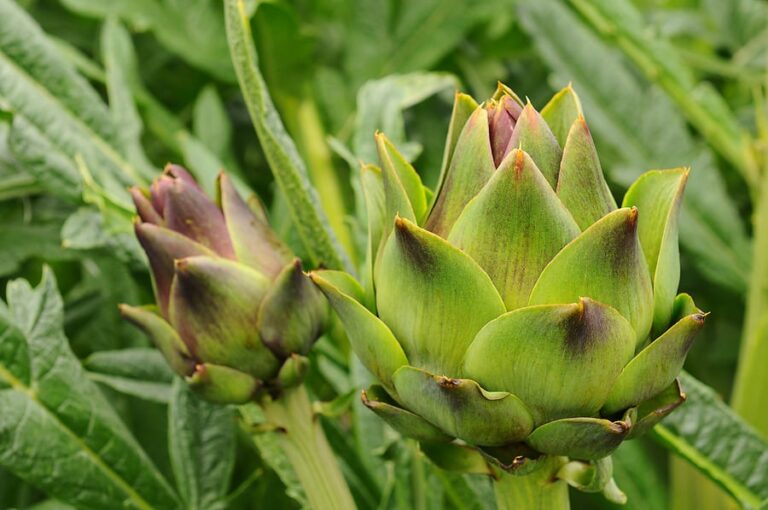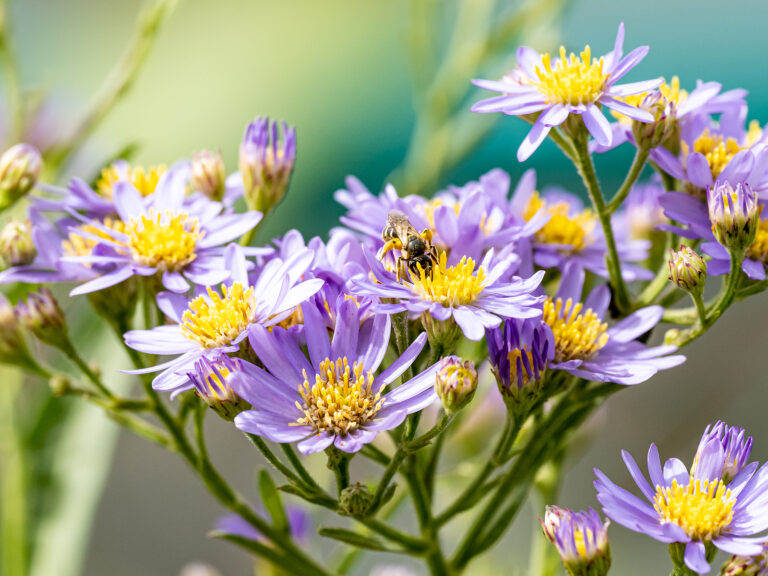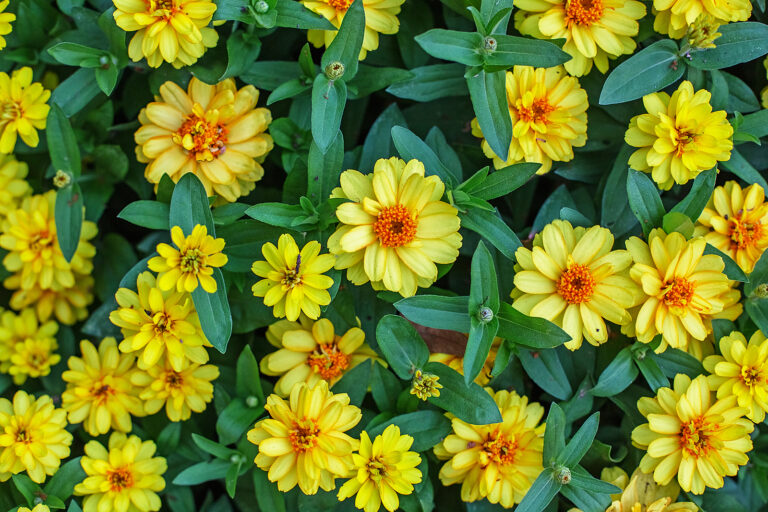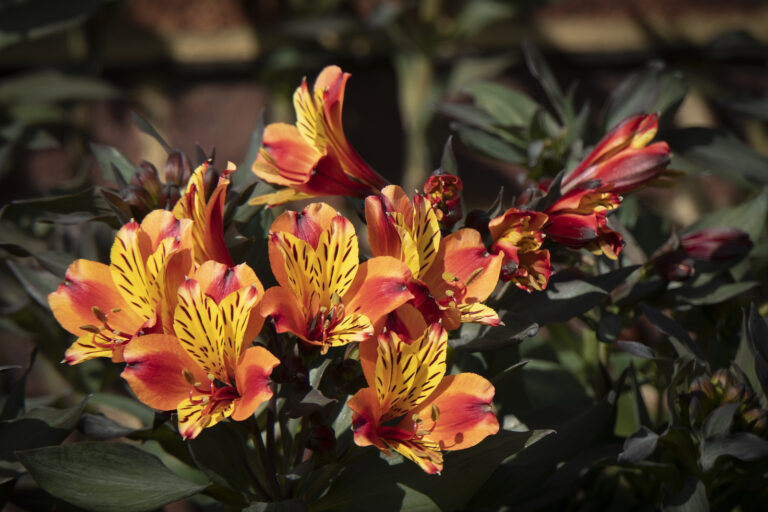How to Grow Mexican Sunflower — Tithonia
Tithonia–commonly called Mexican sunflower–produces large, long-stemmed, mostly solitary orange or orange-red flowerheads from late summer to autumn. Deeply veined dark green leaves with serrated edges are hairy on the underside.
Tithonia can withstand hot weather and is well suited for hot summer regions and desert gardens. Tithonia can be planted adding height to a mixed or annual border. It is also a good cut flower; the flowers appear on long stems.
Garden Success Products at Amazon:
- 10 pcs Stainless Steel Garden Hand Tool Set
- Flexi Hose with 8-inch Nozzle
- Gorilla Cart 4 Cu. Ft, 300-pound Capacity
- Neem Bliss 100-% Cold Pressed Neem Oil
- Safer Brand Insect Killing Soap
- Wildflower Seed Mix Attracts Hummingbirds and Butterflies
- Eden Brothers All Perennial Seed Mix
Tithonia is a genus of 10 bushy annuals and perennials native to Mexico and Central America. One species Tithonia rotundifolia is commonly grown in gardens.
Get to Know Tithonia — Mexican Sunflower
- Plant type: Annual
- Growing Zones and range: Zones 9-10
- Hardiness: Thrives in heat
- Height and width: 30 inches (76cm) to 5 feet (1.5m) tall and wide, depending on the variety
- Foliage: Deeply veined dark green leaves with serrated edges
- Flowers: Daisylike 3 inch blooms are fragrant
- Flower color: Orange with yellow-orange centers
- Bloom time: Late summer through fall
- Uses: Attracts butterflies, borders, cut flower
- Common name: Mexican Sunflower
- Botanical name: Tithonia rotundifolia
- Family name: Asteraceae
- Origin: Mexico and Central America
Where to Plant Tithonia — Mexican Sunflower
- Plant Tithonia in full sun.
- Grow Tithonia in average to poor soil that is well drained.
- Tithonia is heat resistant and well suited for hot summer regions.
Tithonia Uses
- Tithonia gives height to a mixed or annual border.
- Tithonia is a good selection for a desert garden.
- Tithonia are attractive cut flowers.
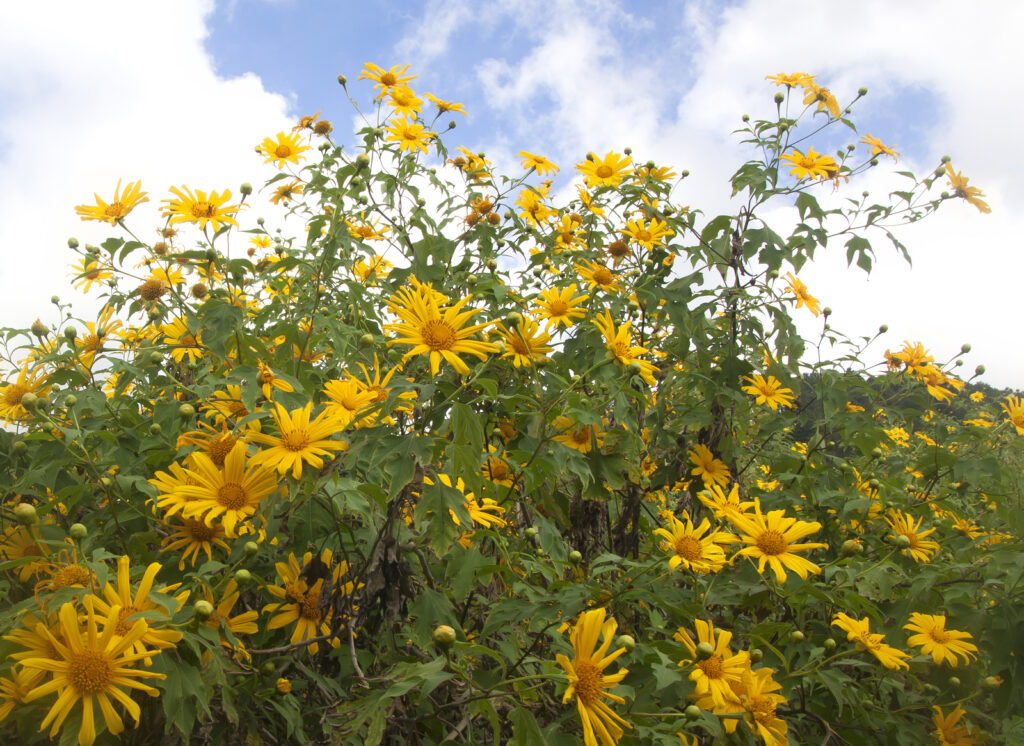
When to Plant Tithonia — Mexican Sunflower
- Set Tithonia in the garden in spring after all danger of frost has passed.
Planting and Spacing Tithonia — Mexican Sunflower
- Space Tithonia 2 to 5 feet apart.
How to Water and Feed Tithonia — Mexican Sunflower
- Tithonia needs moderate to light moisture. Keep plants evenly moist.
- Tithonia does not need fertilizer.
Tithonia — Mexican Sunflower Care
- Stake Tithonia to maintain its upright habit.
- Mulch around Tithonia to conserve soil moisture.
- Leaves turn yellow when exposed to cold.
- For cut flowers, sear the stem ends in boiling water or over a flame, and condition in warm water.
Tithonia Pests and Diseases
- Aphids can attack Tithonia.
- Young foliage can be attacked by slugs and snails.
Tithonia Propagation
- Seeds germinate in 10 to 18 days at 70° to 80°F (21°-27°C).
- Sow seeds directly in the garden after all danger of frost is past.
Tithonia — Mexican Sunflower Varieties to Grow
- Tithonia rotundifolia, Mexican sunflower. Robust, branching annual, grows 30 inches to 5 feet or taller; bright orange or orange-red flowers to 3 inches across, similar to those of single-flowered dahlias. Cultivars include: ‘Fiesta del Sol’ is a dwarf cultivar that grows to 30 inches tall; ‘Aztec Sun’ attracts butterflies.
Tithonia Frequently Asked Questions
Q: What growing conditions do Mexican sunflowers need?
A: Plant Tithonia in full sun in dry soil, and do not overwater. Feed lightly each month with a soluble fertilizer.
Q: What is the best way to start Tithonia?
A: Start Tithonia indoors in early spring so that you will get lots of blooms in late summer and fall.
Q: Which Mexican varieties are good for a border?
A: Torch is a variety that grows only four feet tall and blooms earlier than other species which can grow to six feet tall. Use it at the back of a border or as a screen. Goldfinger is a smaller grower to three feet and has a longer growing season.
Related Articles:

